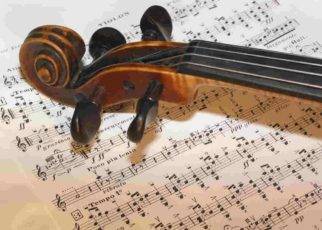Every music composition contains three fundamental elements: rhythm, melody and harmony. The rhythm and melody of a piece often define the nationality of the composition. Melody and harmony combined paints the mood of the piece, translating feelings into sound. Adding all three elements together is what makes music so unforgettable.
Rhythm Training in Music Education
The most primeval of the three elements is rhythm. Perhaps this is because the first sound a human hears is the repeated rhythm of the mothers’ blood whooshing through the placenta while the baby is still in the womb. Once the baby arrives, it is comforted by the rhythmic movements of the cradle, the rocking chair and the mother’s reassuring pats. Rhythmic drumming has been a part of tribal customs for centuries, stirring something deep within the human soul. Alternative Therapies in Health and Medicine. 2001 Jan;7(1):38-47 published a study which found that group drumming is an effective stress reducer.
Rhythm is comprised of several factors. The first is time. This is simply the duration of a sound, whether measured in seconds or hours. Then there is meter. Meter can probably described as a series of accented notes occurring within a given short period of time. Tempo defines how fast or slow a musical segment should be performed. Rhythm in music serves the same purpose as meter in poetry.
Melody and Harmony in Music Education
Melody can be defined as the “notes,” or tones heard in music. Melodies have high and low tones, which express the deep emotions of love, grief, happiness and anger. A melody is the “singable” tune, the answer to the question, “How does that song go?” It is easy to identify the melody in popular songs. It is the part the lead singer sings, and is usually accompanied by guitar chords or other instrumental accompaniment.
Those chords make up the harmony of a musical composition. What might otherwise be boring melodies can become rapturous with fascinating harmonies supporting them. Harmony indeed supports melodies by supplying tones which are either pleasing or aggravating to the ear, depending on the composer’s intent.
Listening for Rhythm, Melody and Harmony
Students can either buy music downloads for an iPod or search for free music online for listening and studying. Since rhythm in its simplest form is depicted by tribal music, a student’s rhythm training could start by listening to traditional tribal chants. Native American Hopi chants, mantras such as Ganesha’s “Om Gum Ganapataye Namaha,” and the West African “welcome song” called a “Fanga” would make excellent listening suggestions to show simple rhythm in music.
For melody, a student might listen to “Morning Mood,” from Edward Grieg’s Peer Gynt Suite No. 1, Op. 46. In this piece, there is a distinct repeated melody which many students will recognize. This is also a wonderful example of poetic thought in music. The African American spiritual “Ain’ A That Good News” is a perfect example of a vocal folk melody. Finally, for a listening example combining rhythm, melody and harmony, a student might listen to the final movement of the Peer Gynt Suite, the famous “In the Hall of the Mountain King.”
Discover more from Thenewsdoor
Subscribe to get the latest posts sent to your email.




